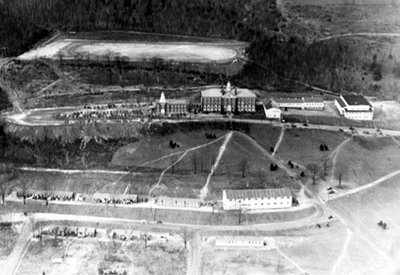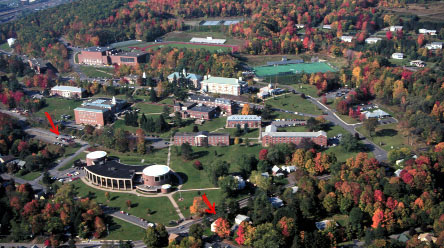 |

My Wife grew up in a house less than 200 yards from a former Sampson Barracks |
 |

My Wife grew up in a house less than 200 yards from a former Sampson Barracks |
Oneonta Daily Star-Monday, May 7, 2001
G.I. Bill helped spur boom on local campuses
There have been many ways our country has expressed thanks to our veterans of war for their service. But there probably has never been a more far-reaching way to reward their service than the G.I. Bill after World War II.
This legislation had a profound effect on the way our region grew in some ways, as well across the nation. The only other far-reaching way veterans have been thanked for their service was just after the American Revolution. Soldiers were given land bonuses for their service.
Not too long after D-Day on June 6, 1944, President Franklin Roosevelt signed a bill that would give veterans some great benefits when they returned home; benefits that could help them buy a home, or go to college. This time, we'll focus on the educational aspect of the G.I. Bill, and how it affected our region.
Around 1940, the average G.I. was 26 and had one year of high school as his only education. The G.I. Bill promised returning veterans a chance to go to college to advance themselves. At first, university presidents thought the idea would be disastrous. The president of Harvard University thought the initiative would create "unqualified people, the most unqualified of this generation," coming to college.
But the discipline and ethics of the military made many students want to get ahead. The idea of doing a job, and doing it well during their time of military service could mean promotion in rank.
Needless to say, there were a lot of takers for going to college once World War II ended in 1945. Oneonta State Teachers College, Hartwick College and Delhi Agricultural College were about to experience huge growth, as more than 101,000 returning New York veterans expressed interest in higher in the education promised to them.
The unprecedented demand moved Gov. Thomas Dewey to start the wheels turning for huge expansions on campuses across state-run New York colleges. Dewey established a first budget of $67.5 million to cover a five-year development period, and formed the State University of New York system.
Economic conditions after the war put some delays on providing housing and classroom space for students. The Civilian Production Administration in April 1946 put new construction of dormitories on the Hartwick College campus on hold, in favor of the nationwide Veteran's Emergency Housing program. But The Oneonta Herald reported in June how work on housing would begin July 1 for Hartwick College, to accommodate students for the fall term. The construction didn't actually get underway until the fall of 1946, and was promised for completion by Jan. 1, 1947.
Seven structures would be erected by the federal government, including 15 family and 90 single units. The wooden family units would be nicknamed "Splinterville" eventually. These dwellings were obtained from the former army barracks at the Bridgeport, Conn., Municipal airport. A larger two-story dormitory for men was hauled here from Sampson Naval base. Each of these structures were once located at the lower part of the O'Yaron Hill campus, near other dwellings on Clinton Street.
As the 1950s, '60s, and '70s came along, these wooden structures would be replaced by present brick dormitories and college buildings. Meanwhile, the former Parshall Hospital, on Myrtle Avenue, was purchased by Hartwick College in the spring of 1946. It would house 75 of the 300 veterans who were set to come to the campus for the fall term. The dormitory would later be named Buckley Hall.
At Oneonta State Teachers College, the large building at the top of Maple Street commonly called "Old Main" was also getting crowded. New dormitories and classroom buildings began to appear on the hill behind the stately brick structure around 1950.
Meanwhile, barracks-style housing was constructed at the Delhi Agricultural College to accommodate students. It was crowded for awhile at each college, until building expansion plans would evolve over the next few decades. Graduates would move on to a job and buy homes, starting a very prosperous period after World War II.
Next time, we'll continue the look at how the G.I. Bill affected our area, specifically on local housing and neighborhood expansion.
City Historian Mark Simonson's column appears weekly on this page. If you have feedback or ideas about the column, write to him at The Daily Star, or e-mail him at simmark@stny.rr.com.
http://www.thedailystar.com/opinion/columns/simonson/2001/05/07/simonson.html